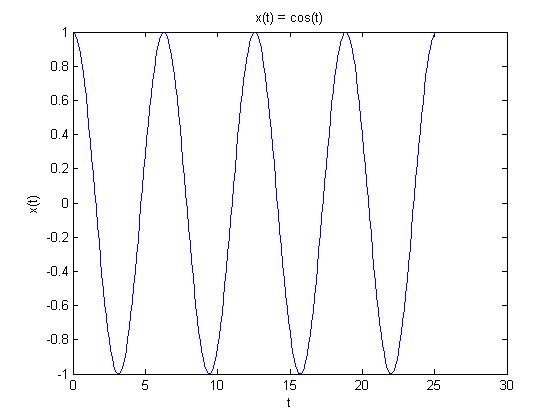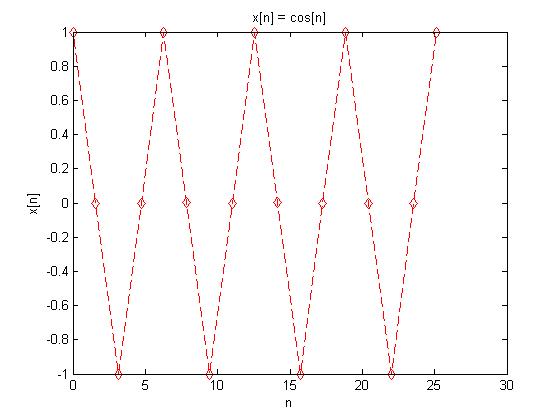(→Part A: Periodic Signals Revisited) |
(→Part A: Periodic Signals Revisited) |
||
| Line 4: | Line 4: | ||
[[Image:HW2_CTfunction_ECE301Fall2008mboutin.jpg]] | [[Image:HW2_CTfunction_ECE301Fall2008mboutin.jpg]] | ||
| + | |||
| + | |||
| + | === Periodic DT Signal === | ||
| + | |||
| + | In order to create a discrete time signal <math> x[n] = cos[n] </math> that was still periodic, the time interval couldn't be integers, as shown previously. Therefore, a time interval of <math> \pi/2 </math> was selected. | ||
| + | |||
| + | [[Image:Untitled2_ECE301Fall2008mboutin.jpg]] | ||
Revision as of 10:50, 10 September 2008
Part A: Periodic Signals Revisited
I used the continuous time signal $ x(t) = cos(t) $, as it seemed many people used in Homework 1 for their example of a periodic function. The signal repeats itself at intervals of $ 2\pi $.
Periodic DT Signal
In order to create a discrete time signal $ x[n] = cos[n] $ that was still periodic, the time interval couldn't be integers, as shown previously. Therefore, a time interval of $ \pi/2 $ was selected.



